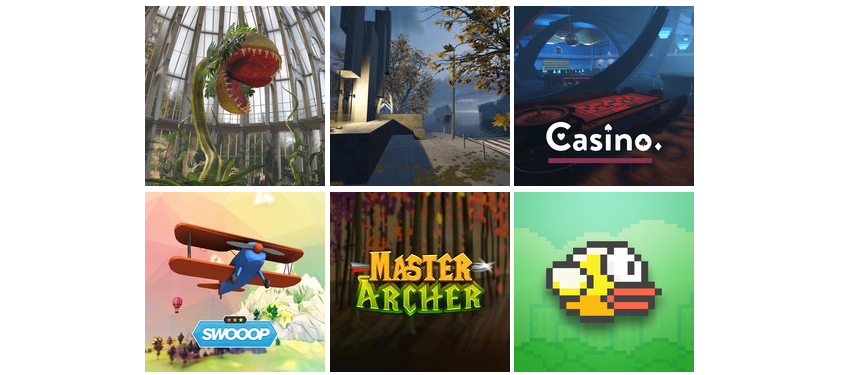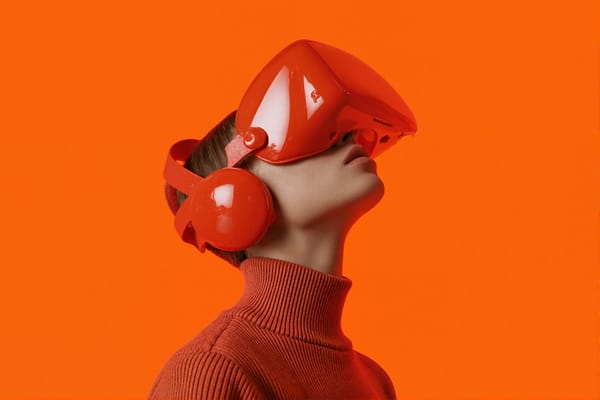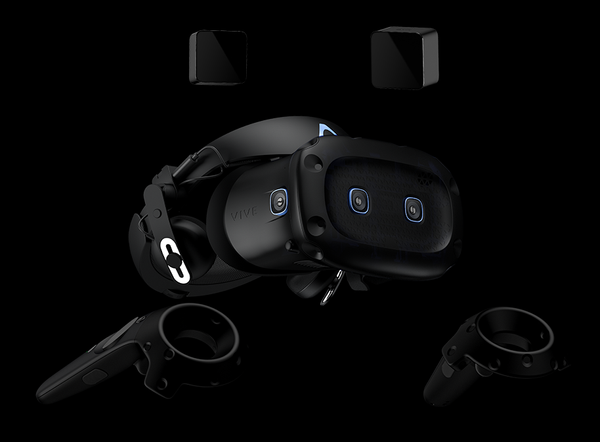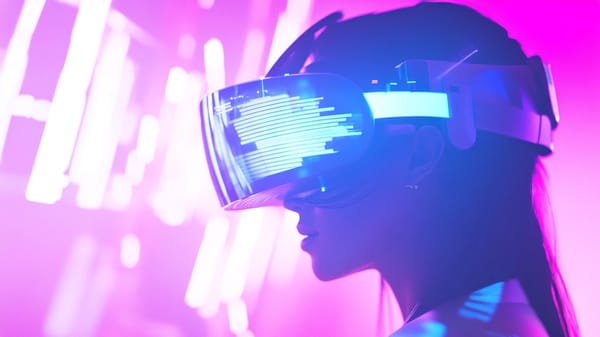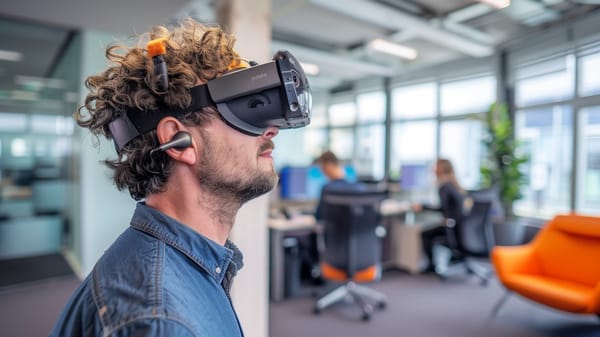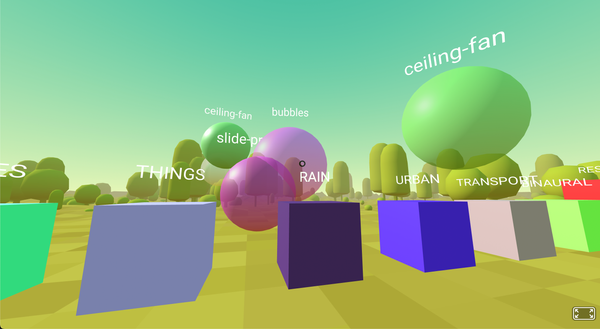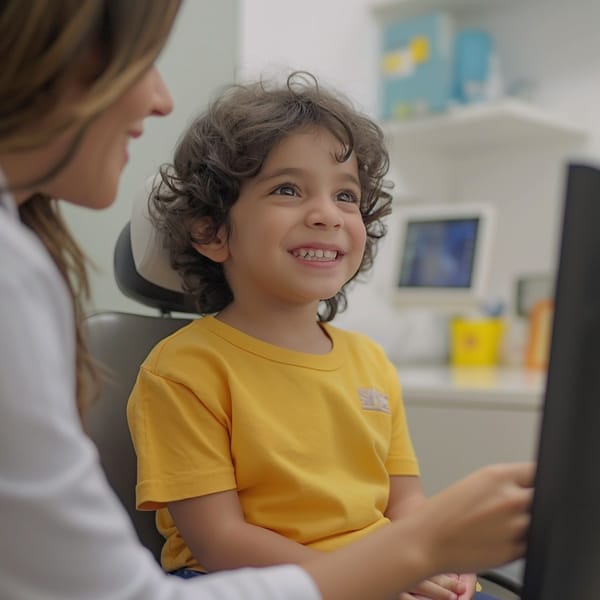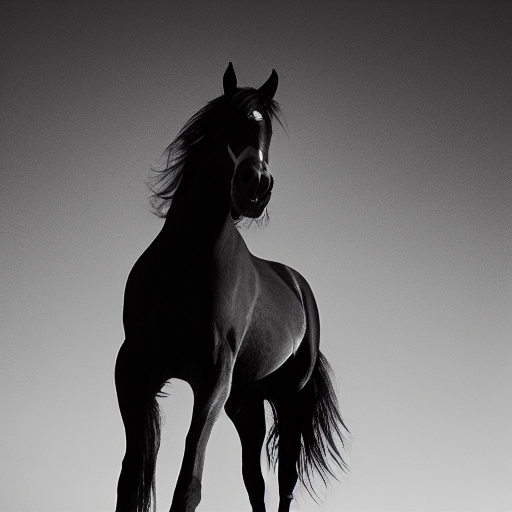28 Game-Changing Open-Source Tools for VR and AR Development in 2024
Table of Content
Virtual Reality (VR) and Augmented Reality (AR) have evolved from niche technologies into mainstream innovations, revolutionizing industries from gaming and entertainment to education and healthcare.
As we move through 2024, the demand for creating immersive, interactive experiences is higher than ever. Open-source frameworks, engines, and libraries are at the forefront of this revolution, providing developers with powerful tools to bring their creative visions to life without the constraints of proprietary software.
Use Cases of VR and AR Frameworks and Applications
1. Education
Virtual and Augmented Reality are transforming the educational landscape by offering immersive, interactive learning experiences. Open-source VR and AR frameworks enable educators to create virtual classrooms, interactive lessons, and realistic simulations that enhance student engagement and understanding. For example:
- Virtual Field Trips: Students can explore historical sites, museums, and natural environments without leaving the classroom.
- Interactive Labs: Science students can conduct virtual experiments in a safe and controlled environment.
- Skill Training: Medical students can practice surgeries and procedures using VR simulations, reducing the risk and cost associated with real-world practice.
2. Medical Simulation
In the medical field, VR and AR technologies are used to improve patient outcomes, enhance training, and streamline procedures. Open-source frameworks provide healthcare professionals with the tools to develop realistic simulations and training modules. Key applications include:
- Surgical Training: Surgeons can practice complex procedures in a virtual environment, improving their skills and confidence before operating on real patients.
- Patient Rehabilitation: VR applications can assist in physical therapy, providing patients with engaging exercises and real-time feedback.
- Diagnostic Assistance: AR can overlay patient data and imaging results onto the real world, aiding doctors in diagnosing conditions more accurately.
3. Gaming
The gaming industry has been a significant driver of VR and AR innovation. Open-source frameworks allow developers to create immersive and interactive games that transport players to new worlds. Some notable uses include:
- Immersive Worlds: VR games can create fully immersive environments where players can explore, interact, and compete.
- Augmented Reality Games: Games like Pokémon GO use AR to blend the virtual and real worlds, providing unique and engaging experiences.
- Multiplayer Experiences: Open-source engines facilitate the development of multiplayer VR games, enabling players to interact and compete in virtual spaces.
4. Industrial Simulation
VR and AR technologies are revolutionizing industrial training, design, and maintenance. Open-source tools provide industries with cost-effective solutions to enhance productivity and safety. Applications include:
- Training Simulations: Workers can undergo realistic training in a virtual environment, learning how to operate machinery and handle emergencies without risk.
- Design and Prototyping: Engineers and designers can visualize and interact with 3D models of products, making it easier to identify and fix potential issues before physical prototypes are made.
- Maintenance and Repair: AR can guide technicians through complex maintenance procedures by overlaying instructions and diagrams onto the physical equipment.
These diverse use cases illustrate the transformative potential of VR and AR technologies across various fields, driven by the accessibility and flexibility of open-source frameworks.
In this article, we will explore 28 cutting-edge open-source VR and AR frameworks, engines, and libraries that empower developers to create stunning, interactive experiences. Whether you are a seasoned developer or just beginning your journey into the world of VR and AR, these tools offer a wide range of features and capabilities to suit your project needs.
From robust engines that handle complex physics and rendering to versatile libraries that simplify the integration of VR and AR functionalities, this list covers the best resources available in 2024.
1. A-Frame
A-Frame is an open-source framework for building a web-based virtual reality experience. It is a developer-friendly, easy to use and supports all modern browsers.
2. VREngine
VREngine is a Unreal Engine plugin that lets you easilly create VR projects. It provides all the necessary ground work so you can focus more on the game rather than creating basic VR things like movement and item pickup.
It is built with Unreal Engine, and Steam VR.
3. OSVR
OSVR is an open-source software platform for virtual and augmented reality. It allows discovery, configuration and operation of hundreds of VR/AR devices and peripherals.
OSVR supports multiple game engines, and operating systems and provides services such as asynchronous time warp and direct mode in support of low-latency rendering.

4. Firefox Reality
Firefox Reality is a fast and secure browser for standalone virtual-reality and augmented-reality headsets. The goal of this project is to create a full-featured browser exclusively for standalone AR and VR headsets.
5. Exokit
Exokit is a Native VR/AR/XR engine for JavaScript 🦖. It works smoothly with other 3D/ 2D engines such as Three.js, Unity, Pixi.js, Bablyon.js, A-Frame, and WebAssembly.
It currently targets the following platforms:
- OpenVR Desktop VR (Steam compatible)
- Oculus Desktop (Oculus Rift/Rift S)
- Oculus Mobile (Oculus Quest/Go, GearVR)
- Magic Leap
- iOS ARKit *
- Android ARCore *
- Google VR (Daydream / Cardboard / Mirage Solo) *
6. VRTK Virtual Reality Toolkit
This is an open-source example of how to use the Tilia packages to create great content with VRTK v4.
7. Bullet Physics SDK
Bullet Physics SDK: real-time collision detection and multi-physics simulation for VR, games, visual effects, robotics, machine learning etc.
8. PlayCanvas WebGL Game Engine
PlayCanvas is an open-source game engine. It uses HTML5 and WebGL to run games and other interactive 3D content in any mobile or desktop browser.
9. REFramework
A mod framework, scripting platform, and modding tool for RE Engine games. Inspired by and uses code from Kanan.
10. Rhubarb VR
Rhubarb is a game engine that allows you to program and collaborate with others. It does all of this while synchronizing modifications of the world with everyone in a session so you can collaborate and socialize with people to create amazing things.
11. Hotham
Hotham is an attempt to create a lightweight, high performance game engine for standalone VR headsets, like the Oculus Quest 2.
12. The Forge
The Forge is a cross-platform rendering framework supporting Windows, Steam Deck, Android Pie+, Apple iOS, iPadOS, PS4, PS5, XBOX, Quest, and Switch.
13. LWJGL
LWJGL is a Java library that enables cross-platform access to popular native APIs useful in the development of graphics (OpenGL, Vulkan, bgfx), audio (OpenAL, Opus), parallel computing (OpenCL, CUDA) and XR (OpenVR, LibOVR, OpenXR) applications.
LWJGL is an enabling technology and provides low-level access. It is not a framework and does not provide higher-level utilities than what the native libraries expose. As such, novice programmers are encouraged to try one of the frameworks or game engines that make use of LWJGL, before working directly with the library.
14. Three.ar.js
Three.ar.js is a helper three.js library for building AR web experiences that run in WebARonARKit and WebARonARCore.
15. FreemoVR - virtual reality engine
FreemoVR is a virtual reality engine built on ROS <http://ros.org>_ and OpenSceneGraph <http://www.openscenegraph.org>_. It manages multi-computer realtime tracking and display with the goal of being useful for scientific studies of vision and behavior.
16. LÖVR
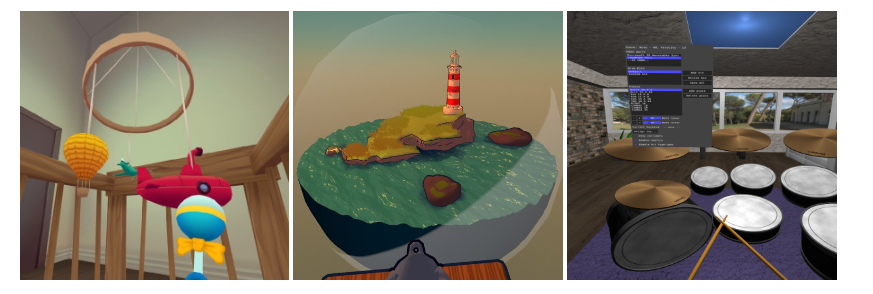
This is a free and open-source Lua Virtual Reality Framework.
Features
- Cross-Platform - Runs on Windows, macOS, Linux, and Android.
- Cross-Device - Supports Vive/Index, Oculus Rift/Quest, Windows MR, and has a VR simulator.
- Beginner-friendly - Simple VR scenes can be created in just a few lines of Lua.
- Fast - Writen in C11 and scripted with LuaJIT, includes optimized single-pass stereo rendering.
- Asset Import - Supports 3D models (glTF, OBJ), skeletal animation, HDR textures, cubemaps, fonts, etc.
- Spatialized Audio - Audio is automatically spatialized using HRTFs.
- Vector Library - Efficient first-class support for 3D vectors, quaternions, and matrices.
- 3D Rigid Body Physics - Including 4 collider shapes, triangle mesh colliders, and 4 joint types.
- Compute Shaders - For high performance GPU tasks, like particles.
17. Annwvyn
Annwvyn is a simple C++ game engine built upon free and open source technologies to easily create applications and games tailored for Virtual Reality HMD. It uses the OGRE rendering engine in its OpenGL mode in the backend.
Currently the engine supports :
- Oculus Rift through the Oculus SDK (OVR) Windows Only
- OpenVR Windows and Linux
- HTC Vive
- Oculus Rift (You can use the Oculus Rift with SteamVR, but the "native" way is recommended)
- Any headset officially supported by SteamVR
18. Vulkan Vxgi VR Engine
This is a free and open-source VR engine that comes with super advanced features and full voxel support.
19. Universal Unreal Engine VR Mod
This is a free Universal Unreal Engine VR Mod for building rich VR experience.
Features
- Full 6DOF support out of the box (HMD movement)
- Full stereoscopic 3D out of the box
- Native UE4/UE5 stereo rendering system
- Frontend GUI for easy process injection
- Supports OpenVR and OpenXR runtimes
- 3 rendering modes: Native Stereo, Synchronized Sequential, and Alternating/AFR
- Automatic handling of most in-game UI so it is projected into 3D space
- Optional 3DOF motion controls out of the box in many games, essentially emulating a semi-native VR experience
- Optional roomscale movement in many games, moving the player character itself in 3D space along with the headset
- User-authored UI-based system for adding motion controls and first person to games that don't support them
- In-game menu with shortcuts for adjusting settings
- Access to various CVars for fixing broken shaders/effects/performance issues
- Optional depth buffer integration for improved latency on some headsets
- Per-game configurations
- C++ Plugin system and Blueprint support for modders to add additional features like motion controls
20. Relativty (OS Hardware and Software)
An open source VR headset with SteamVR supports for $200.
It includes:
- Fully Open-source - hardware, software, firmware.
- Steam VR support.
- Natively displays 2K resolution at 120FPS.
- Compatible with Arduino.
- Experimental Body-Tracking
21. Jolt Physics
A Jolt Physics multi core friendly rigid body physics and collision detection library. Suitable for games and VR applications. Used by Horizon Forbidden West.
22. Viro React
Viro React is a platform for developers to rapidly build augmented reality (AR) and virtual reality (VR) experiences. Developers write in React Native, and Viro runs their code natively across all mobile VR (including Google Daydream, Samsung Gear VR, and Google Cardboard for iOS and Android) and AR (iOS ARKit and Android ARCore) platforms.
23. @react-three/xr
Turn any React app into an interactive immersive experience.
24. SimpleVR Unity3D VR lightweight framework.
Unity3D VR lightweight framework.
25. uMuVR (Unity)
The Multi-User Virtual Reality and Body Presence framework is a Unity framework that provides a foundation for multiuser/player VR experiences. Its networking is provided by the Fish-Networking library. It is primarily designed around allowing users to quickly create VR applications.
Features
- Multi User VR
- Network Integration with the XR Interaction Toolkit
- Networked Physics (Client Authoritative and Rollback [provided by FishNetworking])
- Built-in Voice
- Ownership Transfer Volumes
26. UltimateXR
UltimateXR is a professional-grade, free, open-source framework and toolkit for Unity. UltimateXR's goal is to simplify the development of virtual reality applications; from simulators to videogames and from simple prototypes to full AAA-scale projects.
Features
- Free and open-source under the MIT license.
- Cross-device compatibility. Support for all major headsets.
- State-of-the-art grab and manipulation mechanics.
- Integrated hand pose editor.
- Customizable full-body avatar representation with Inverse Kinematics.
- Library of gender- and race-agnostic hands with special care on inclusion.
- Support for multiple locomotion mechanics.
- Advanced UI components including interaction and tweening.
- Scalable architecture.
- Clean code; fully documented using standard XML format.
- Lots of tools, methods and extensions to make development easier.
27. Unity-VR-Framework
A set of scripts and prefab intended as a more developer-friendly alternative to SteamVR and VRTK.
Features
- A single Player prefab which comes equipped with interactor hands, configurable teleporting, and all the management scripts the framework needs. No complicated setup!
- Haptic materials that can be applied to all the objects in your scene at almost no cost to CPU or RAM.
28. vitrivr-VR
vitrivr-VR is a virtual reality interface for the vitrivr multimedia retrieval system.

